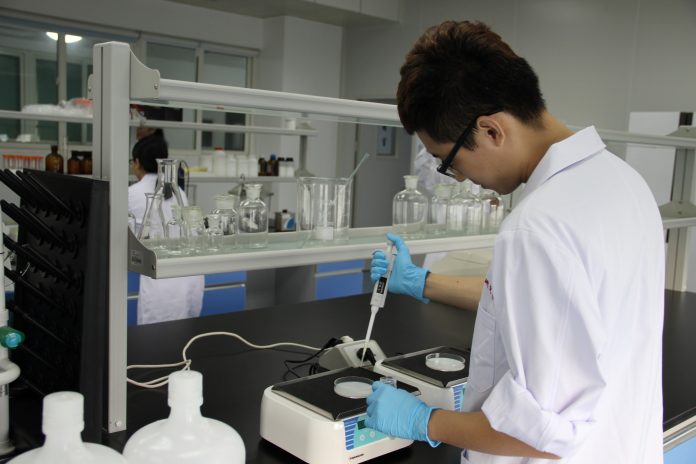Scientific method steps are rational and organized approaches to look at how things work in and around the world. It is likewise considered to be knowledge accrued through the breakthroughs about everything in the world.
The term “science” comes from Scientia, a Latin word, which means know-how based on demonstrable as well as reproducible information, based on the Merriam-Webster Dictionary. True to this explanation, science intends to get measurable outcomes by means of analysis and assessment. Science does not depend on preferences or opinions but is based on fact. The scientific process is made to challenge concepts through research. One essential aspect of the scientific method is the fact that it works on the natural world only by the University of California. Anything supernatural is not going to fit into the description of science.
Table of Contents
Concept of scientific method steps
The scientists use the scientific method steps while investigating obtaining measurable and scientific evidence in any experiment linked to speculation, the outcomes looking to either contradict or support a theory.
Jaime Tanner, who is a biology professor at Marlboro College, informed Live Science that being a field biologist, his preferred section of the scientific method is to be in the field accumulating the information. He also added that the real fun is realizing that you are attempting to find a solution to an appealing query. Therefore the initial step in determining queries and finding possible solutions (hypotheses) is likewise significant and is an innovative procedure. Then after collecting the information, you need to evaluate it to verify if your speculation holds true or not.”
A short history of science
One can find the first proof of science in the prehistoric times, like the invention of the wheel, the discovery of fire, and the progress of writing. Early tablets consist of numbers as well as information regarding the solar system. However, science became unquestionably more scientific with time.
The 1200s
It was Robert Grosseteste who produced the platform for the appropriate techniques of contemporary scientific testing. His works consisted of the theory that an inquiry should be according to measurable proof that one verifies through testing.
The 1400s
Leonardo da Vinci started his notebooks in search of proof that the body of a human is microcosmic. The scientist, artist, and mathematician likewise collected details about optics as well as hydrodynamics.
The 1500s
Nicolaus Copernicus was responsible for advancing the comprehension of the solar system by discovering heliocentrism. It is a model in which all the planets, including the Earth, revolve around the sun, the center of our solar system.
The 1600s
Johannes Kepler advanced the laws of planetary movement. Galileo Galilei improved on an innovative discovery, the telescope, and he used the device for studying the celestial bodies. The 1600s likewise noticed improvements in the study of physics while Sir Isaac Newton formulated the laws of motion.
The 1700s
Benjamin Franklin found that lightning happens to be electrical. Apart from this, he helped to advance the study of oceanography as well as meteorology. Besides this, Antoine Lavoisier referred to as the father of contemporary chemistry, created the conservation of mass law.
The 1800s
Alessandro Volta discovered the electrochemical series, which resulted in the discovery of the battery. Moreover, John Dalton launched atomic theory, which mentioned that every single matter consists of atoms that blend to form molecules. Gregor Mendel likewise revealed his inheritance laws. Afterward, Wilhelm Conrad R Röntgen invented X-rays, while the laws of George Ohm offered the foundation for finding out how to utilize electrical charges.
The 1900s
The breakthroughs made by Albert Einstein, including the theory of relativity, had been the focal point in the commencing of the 20th century. Medicine changed permanently with the invention of the polio vaccine in the year 1952. In 1953, Francis Crick and James D. Watson discovered the DNA’s structure as well.
The 2000s
During this century, we saw the preliminary draft of the human genome getting completed, which resulted in greater comprehension of the DNA. Thus the study of genetics advanced to a great extent.
Scientific method steps
- Observe
- The question in addition to research
- Hypothesize
- Predict in line with the hypothesis
- Test
- Notice the outcome. Correct hypothesis
- Repeat steps 4 to 6 until your theory matches the outcomes
The basis of science happens to be observed as we comprehend it these days and forms the initial step in the scientific method. It might be something genuinely straightforward and apparent, such as “felines prefer to eat meat,” or something which is not obvious readily – “you can find an unlimited number of decimals in p,” for instance.
Findings naturally result in a question – “why do felines consume meat?” – And our effort at giving answers to this will first demand to take a look at the available information. You might find this from your earlier observations, papers of other scientists, and so forth. Thus let us point out that while going through the culinary preferences of your cat, you figured out that “kitties do not consume spinach.” Earlier experience with your furry friend also lets you know that “cats prefer to consume milk.” Not a single word beyond that.
This failed to answer your question, and so an idea is now developing in your head – “kitties only consume white and red meals since milk is white and meat is red.” That is your theory. It’s crucial to keep this speculation falsifiable, which means you will find a possible negative solution so that you can check it out to see how it does fare against actuality.
You begin to do that using a conjecture. Even though this may sound fancy, it is simple, and you most likely perform it at all times. Anyhow, conjecture essentially implies drawing a reasonable conclusion regarding how the planet would be behaving in case your speculation was genuine and also how if it was not.
We predict that our kitten will consume fresh tomatoes – simply because they are red – and flour – because it is white – however, it is not going to consume cat-food – given that it is brown – or even butter (which is yellow-colored). This conjecture is easily verifiable. The flour and tomatoes will be left untouched while the cat is going to consume the cat food as well as a portion of the butter – the outcomes of the experiment get in the way of your hypothesis. In line with the fresh information, you may modify the theory, generate innovative predictions according to that, and then take the test once again. Or you might have to deny it completely.
To keep your work spotless, make an effort to design the experiments so that they consist of a dependent variable – that remains constant – as well as an independent variable (that modifies) so that you will be able to evaluate and separate their effects. Similarly, use control as well as an experimental group for evaluation. Make use of inductive as well as deductive reasoning to be effective in your theory. Lastly, opt for the falsifying experiment if possible while screening it. In case your theory is true in a riskier experiment, it will do a lot more to validate it in the long run.
Even though the scientific method aims at taking a chance as well as prejudice out of the quest for knowledge, it is not feasible to eliminate these – perhaps one kitten out there loves tomatoes and flour. Remember that just one positive result does not show that a hypothesis is correct, and also one negative outcome will not make it incorrect. It is all about confidence, and you will come across some levels of confidence.
What do you mean by a hypothesis?
Hypotheses happen to be assertions that have restrictions in scope and respect certain situations. The word likewise refers to a concept before any experimental work that we carried out to either prove or disprove it. In case your cell phone is not powering on, you might point out that the battery is useless, and that is your speculation. In that case, you plug the battery in the charger and again try, thus testing the speculation hypothetically. If it nevertheless fails to produce results, you are going to try a different one – “the screen is damaged, and we need to fix it.”
What exactly is a scientific model?
Models happen to be hypotheses that we consider to be at least of restricted validity. The Bohr model is a model of an atom that we see, but it is not what an atom appears like. However, it is illustrative and quire similar to the actual thing to be an excellent replacement in the majority of the situations – it is a “model” of how things are.
What do you mean by theory?
Theories are usually frameworks of ideas that we have confirmed again and again through experiments. They are not necessarily proven correct; however, one cannot discard them since they have never really been proven incorrect. Innovative breakthroughs generally fit into the existing theories, and it is merely after one of these breakthroughs cannot be reconciled with it that scientists make an effort to change the theory. At times theories turn out to rule.
What do you mean by a ‘law’ of science?
We usually consider laws to be essential and globally pertinent in their area of influence. However, several laws happen to be altered with time since our comprehension of the planet has become more sophisticated.
Limitations of Scientific Method Steps
At times we make a fundamental error, which is to mistake the theory for the complete explanation of a thing or phenomenon without carrying out any examination. It is just a hypothesis until tested, even though it appears to be logical. Thinkers dating back to historical Greece have mentioned this argument.
One more wrench which is typically tossed in the scientific method would be to disregard information that does not support the outcome you’re after. Essentially, the experimenter needs to be impartial. Nevertheless, we are capable of justifying “a problem” in particular information under a perceived pressure or strong personal values to obtain a particular result. All information is essential, and there is nothing like a poor result when it comes to science.
An inability to take into account the errors might expose breakthroughs that are not there or might conceal genuine discoveries. Make it a point to check your work twice.
The scientific method, by its definition, cannot be used for figuring out the facts of anything beyond the physical world, such as philosophical queries or emotions – even though its concepts might help in exploring these areas.
And lastly, since the scientific method depends largely on repetition as well as reiteration, certain phenomena that cannot be measured repeatedly do not lend perfectly to its usage. For example, in case you’re attempting to woo the target of your affection, and it goes the wrong way, you cannot start once again in front of the identical individual and try once more, repeatedly, until you come across the most effective method. Your previous assertion will influence the same person. A new individual is going to react differently.
That, in summary, happens to be the scientific theory. It is an amazing blend of discipline in practice but flexibility in considering going with flexibleness in practice but discipline in thinking. This scientific constantly checks the validity of our thinking while we move along, of understanding how we understand. A listing of balances and checks, when noticed, ought to aid you in finding the regulations concealed in the reeds of happenstance.
Notice, deduce, experiment. Take evidence ahead of preference at all times, and attempt to check out as few parameters at any given time as feasible in the experiments. Keep in mind that your hypotheses risk turning out to be fake and your assumptions might work in opposition to you. In case you would like to find the scientific truth, look for something which might lessen the reliability of your outcomes on most occasions, particularly yourself.
Now that you have an insight into the scientific method steps, it will help you make your own experiments in the world of science.








